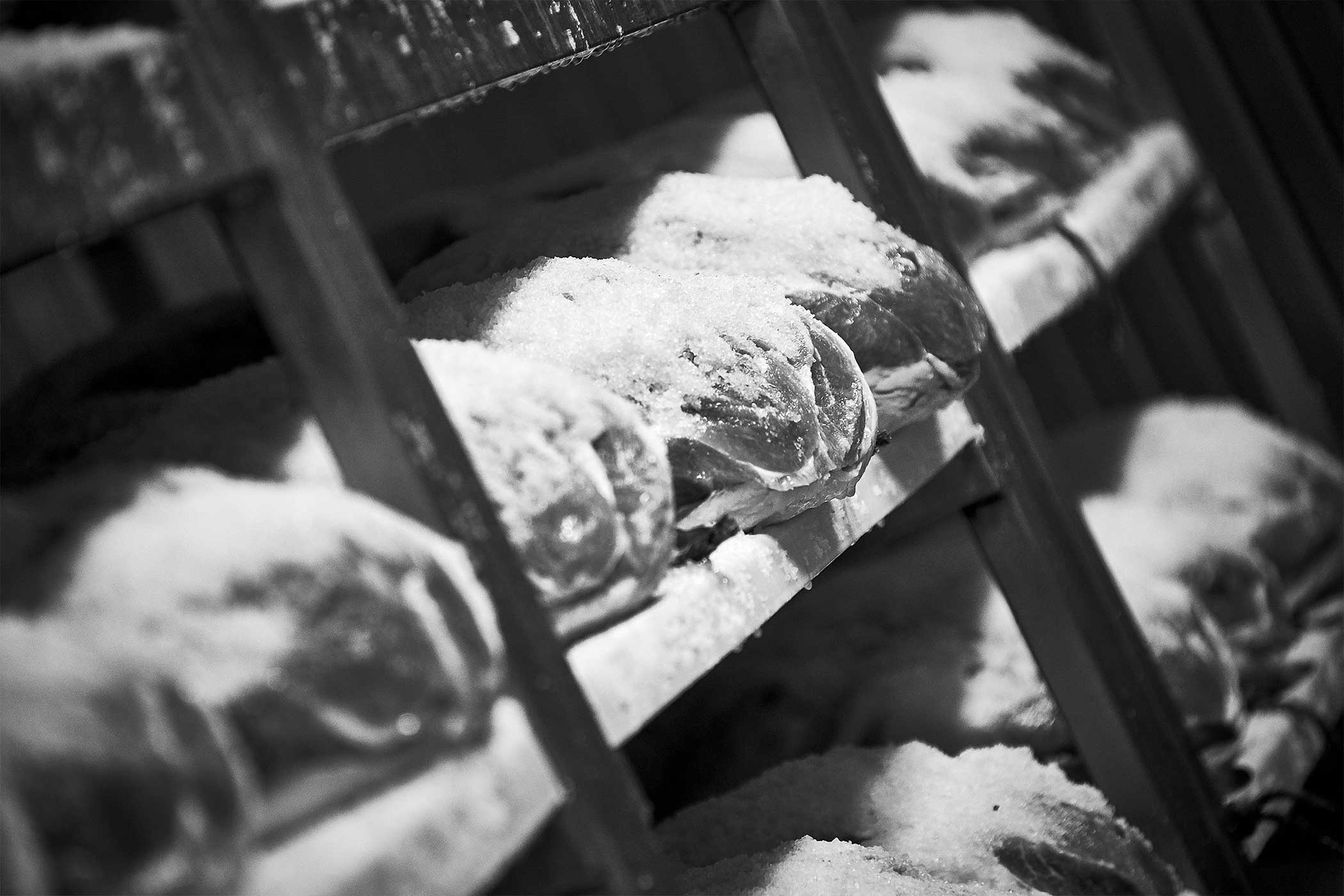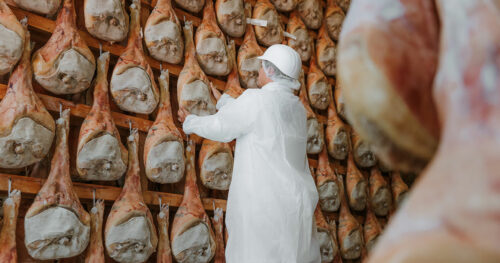Continuation of the trip of a pork leg towards Prosciutto di San Daniele
In the story of how a Prosciutto di San Daniele can be really called that name we started from the basics. We explained to you what happens when a pork leg arrives into our territory and what the procedures that contribute in defining it prosciutto are.
In this second episode of our trip we’ll guide you to the discovery of this gem that is born in Friuli Venezia Giulia(and only here!), describing how the journey that leads a simple pork leg to become a San Daniele Dop continues.
What is pressing?
We have ended the first episode with the story of how the salting takes place. Well, you should know that after this stage there is another one called pressing. In short: the prosciutti are placed in a moulding device that, pressing down on the legs, enables the salt to penetrate deeply. Thanks also to this San Daniele Dop has such an intense flavor. The texture of the meat benefits, shaping this way its characteristic consistency. From what feature can you immediately recognize a leg of San Daniele Dop? Well, from its gorgeous guitar shape. Yes, during the pressing stage our prosciutto starts taking its appearance (it’s very rock’n roll, we like to admit it).
Also Prosciutto di San Daniele has got to take a rest
But, as is well known, the story is very long (and the manifacturing isn’t definitely obvious).
And, sure enough, after all this trouble, also the legs must take a rest. This takes place in quite damp rooms. We are indeed talking about a range between 70% and 80%, with a temperature ranging between 4°C and 6° C. How long does this stage take? It takes about four months from the moment it all started. This way the salt is allowed to get to the heart of the leg, distributing itself uniformly.





